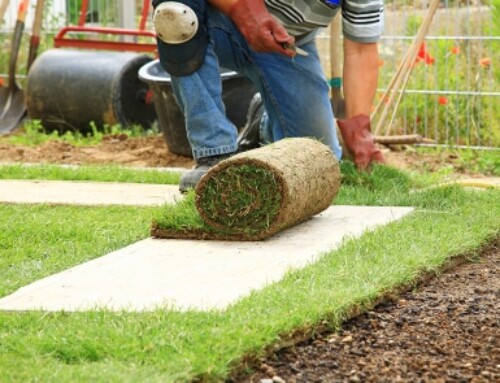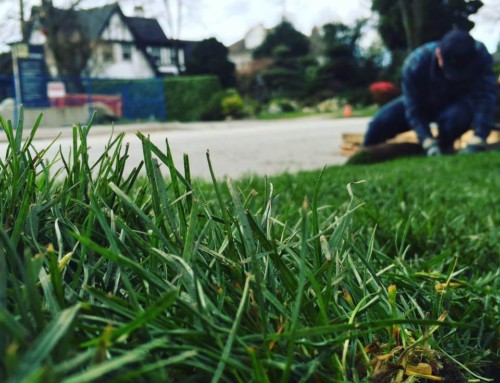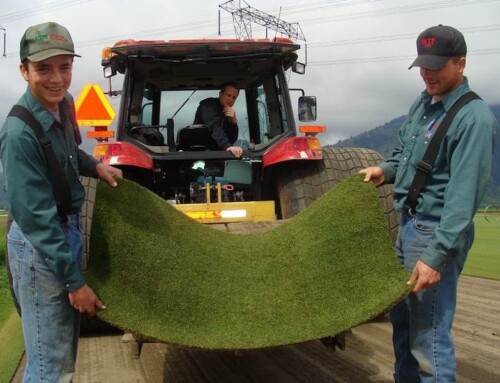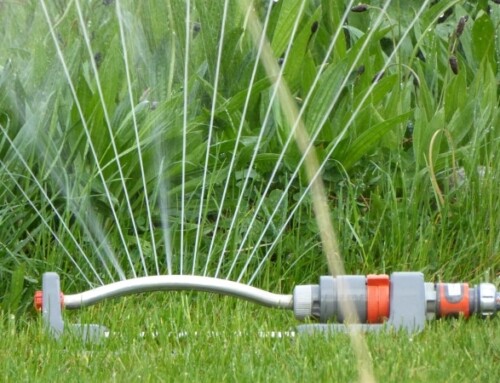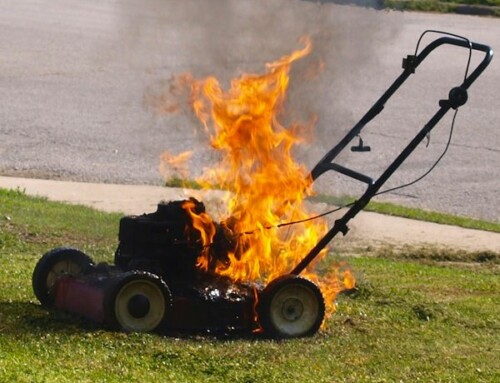Laying sod is not just for newly constructed homes with minimal landscaping. Many homeowners find themselves struggling with their lawn year after year, hoping to achieve the thick, luxurious lawn they see on TV and in magazines.
Laying new sod has many benefits, not the least of which is the immediate transformation of your property. When it comes to instant gratification, no other method will beat new sod, but don’t be fooled into thinking it is as simple as rolling it out on the ground. To get the best results and the look you want, you need to do it right.
So, how to remove old grass and lay new sod? Keep reading.
Preparing the Lawn for Sodding
Investing in new sod for your lawn is a great choice, but you want to be sure that you do it right, or else you may face disappointment when you’re done. Here are the steps that you should take:
- Clear the site to remove debris and other obstacles.
- Rough grade the area to eliminate potential drainage problems.
- Till the soil to a depth of at least 2 inches.
- Add topsoil to achieve a depth of 4-6 inches.
-
- Test the soil pH by bringing a sample to a local garden centre.
- Finish grade the site while maintaining the rough grading contours and slopes.
- Apply fertilizer at the recommended rate to encourage root growth.
- Settle the surface and fill in any low spots.
For more information on preparing the area, check here.
Removing Old Grass and Debris
Your first step is going to be removing the old grass and debris to give a fresh new surface to lay your sod and there are a few approaches that you can use, though the one that works best will be dependent on your lawn and local climate conditions. These methods include: solarization, heavy mulches, herbicides, and hoe or sod cutters.
Solarization involves using a clear plastic tarp over the area you are preparing, which will heat up the soil underneath via the greenhouse effect. The plastic will trap heat and moisture, encouraging seed germination and plant growth, but by heating up the soil and blocking access to water, this process ultimately kills the vegetation underneath, taking as long as two months. You should cut the old lawn as close to grade as possible, then securely anchor the tarp over the area to be cleared. It will not be effective in shady areas, or when experiencing cool nights.
Heavy mulches can effectively smother grass, killing it. This is an organic and sustainable way to do so. Cut the old lawn as close to grade as possible, then cover with a thick layer of paper material over the grass. You can use unwaxed cardboard, layers of unbleached masking paper, or layers of newspaper. Wet it thoroughly, then add the mulch on top. As with solarization, it can take as much as two months and will not be effective in shady areas or during cool nights.
Herbicide use may be subject to local bylaws. Choose one that degrades quickly and mix according to the manufacturer’s directions before applying to all the grass and plants to be removed. The herbicide should be applied on a sunny, windless day and the temperature should be above 15°C (60°F).
A hoe can be used if you have a small lawn, but for a larger one, consider renting a sod cutter, which will allow you to remove strips of old turf. Wait for a heavy rainfall, or thoroughly water your lawn after making 2-inch-deep cuts every two feet using a manual or power edger. You can then use a grape (grubbing) hoe to remove the lawn, one small section at a time. Cut the turf just below the grade, letting the tool do most of the work for you. Once done, you can till the soil, or even use the solarization technique to ensure there are no remaining weeds.
Soil Preparation and Levelling
After removing the old lawn, follow the other steps listed above. Rough grading the soil may uncover more debris to remove. You can use hand tools for small areas but very large areas might require a tractor-mounted box blade.
After adding your topsoil and any amendments indicated by your pH test, final grade the area, raking and rolling repeatedly until the soil is fairly compact and you are satisfied with your grade. Add a root starter fertilizer such as 18-23-12 (N-P-K) as recommended and settle the surface, filling in low spots. If possible, let the area settle further with rainfall or a heavy irrigation.
Laying the New Sod and Post-Sod Care
Lay the new strips of sod starting from the edges of your property, working in. Tuck in the edges of the sod to secure them and dampen the soil as you lay it. You will achieve a better aesthetic effect by staggering the sod in a brick formation.
Once down, your new sod should be watered at least three times per day in short bursts.
When you remove old grass and lay new sod, taking the right steps will help ensure that you get the results you want. Of course, the best results can be obtained by hiring a professional installer with the knowledge and experience to do it right the first time.
For more information about installing new sod, please contact us today.


